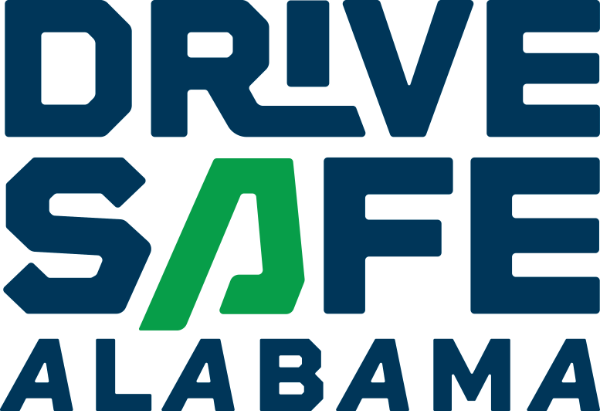Stranded on the interstate? Driving around major debris on your morning commute? The Alabama Department of Transportation (ALDOT) just may be able to help with that – ASAP.
ALDOT’s Alabama Service Assistance Patrol program (ASAP) doesn’t stand for “as soon as possible,” but that’s exactly how employees of the ASAP program work to keep traffic running smoothly across the state and have for nearly 20 years now.
The ASAP program is designed to help facilitate the safe and efficient movement of people and goods by utilizing effective incident management strategies. The program operates along the most heavily traveled areas of interstates across Alabama, including Mobile, Montgomery, Birmingham, Huntsville, and Tuscaloosa. “ALDOT looks at traffic volume and where incidents are happening to determine the specific areas of the interstate that have the greatest need for ASAP,” said Brett Sellers, ALDOT’s State Transportation System Management and Operations Engineer (TSMO). “When there are special events or other high-traffic situations along the interstate, ALDOT regional managers have authority to expand the service area,” Sellers said.
What ASAP does
ASAP’s efforts are focused on five main areas: traffic incident management, motorist assistance, road maintenance, emergency operations, and work zone management.
Essentially, service operators are assigned a section of interstate to travel, and these workers spend their days patrolling that stretch of road. Within that area, they respond to incidents in a variety of ways.
- Traffic Incident Management
Sellers said service operators are similar to first responders for ALDOT. Of course, they are not trained medical professionals, but they are boots on the ground and will oftentimes be the first to arrive at a crash location.
In these situations, if the crash is minor, service operators will help move vehicles out of the way of major traffic while they wait for law enforcement to arrive. This helps prevent something minor from turning into a major incident and helps keep traffic flowing for Alabama’s residents.
- Emergency Operations
When serious incidents do happen, ASAP workers are there to assist first responders.
Recently, ALDOT has updated ASAP trucks with a robust towing system, and a hefty technology package with wireless routers and cameras to monitor incidents.
So, during major incidents, ALDOT workers can provide real assistance in keeping first responders safe on the roads. They can quickly update the big digital message boards that are mounted on the ASAP vehicles to advise traffic to move over to the other lanes.
ASAP trucks carry 27 traffic cones, so service operators have the equipment and the training in how to best manage traffic control in case they need to have people move out of the way.
“A lot of these operators have done a lot of good work in forming relationships with these first responders,” Sellers said. “So when I talk to law enforcement, they tell me they are always happy when an ALDOT truck shows up to help.”
- Road Maintenance
As part of their patrol, service operators are looking for debris or other items that may obstruct traffic. Sellers said the average citizen might be surprised how often a piece of furniture ends up on the interstate.
ASAP workers keep these types of things out of the road, and Alabama is safer for it.
“What starts as a simple piece of debris on the roadway can quickly turn into a major incident–and in the worst case can even turn into a fatality,” Sellers said.
In addition to clearing debris, the ASAP vehicles have technology that can detect if guardrails are damaged. Being able to alert ALDOT maintenance personnel of these damages quickly will make repairs that much more efficient.
- Work Zone Management
Just as service operators are there to assist in emergency situations, they are also available to help with planned road and bridge maintenance. Sign boards mounted on the ASAP vehicles can give display messages to alert drivers of workers ahead and direct them to the open lanes of travel.
Work zones can be dangerous for both drivers and workers. Keeping traffic flowing as efficiently as possible is a key way to keep drivers and ALDOT employees safe during necessary construction and maintenance projects.
- Motorist Assistance
The part of the ASAP program Alabama drivers may be most familiar with is motorist assistance. If a motorist breaks down on the side of the road and is in an ASAP coverage area, ALDOT can often send an ASAP employee to help. ASAP is not a vehicle towing service but can offer services to help motorists get to a safe place off the road. That service sometimes includes providing water for an overheated vehicle, changing a flat tire or giving a battery a jump start.
How ASAP can assist you
The biggest factor in utilizing ASAP assistance is knowing where you are located geographically in your time of need. Fortunately, technology makes that easier. If you are in need of assistance, visit the ASAP Website, and pull up the map feature of coverage areas. The highlighted portions of the map indicate where the program’s services are available.
To make this even simpler, the map has a location feature, so if you allow your phone to track it, it will automatically tell you if you are in a coverage area, what number to call, and what hours ASAP operates. With the exception of the Causeway in Mobile, which operates 24/7 because of the tunnel, the ASAP service does not run around the clock.
While ALDOT is happy to offer this roadside assistance service, Sellers wants to be sure travelers know that this is not a replacement for a roadside service agency such as AAA.
In most of the regions, ASAP is available only part of the day, and not through the late hours of the night. While some do operate on the weekends, others do not. If stranded residents check the ASAP map and realize they are not in a coverage area, they can dial *HP to be connected to a local law enforcement agency that may be able to assist.




